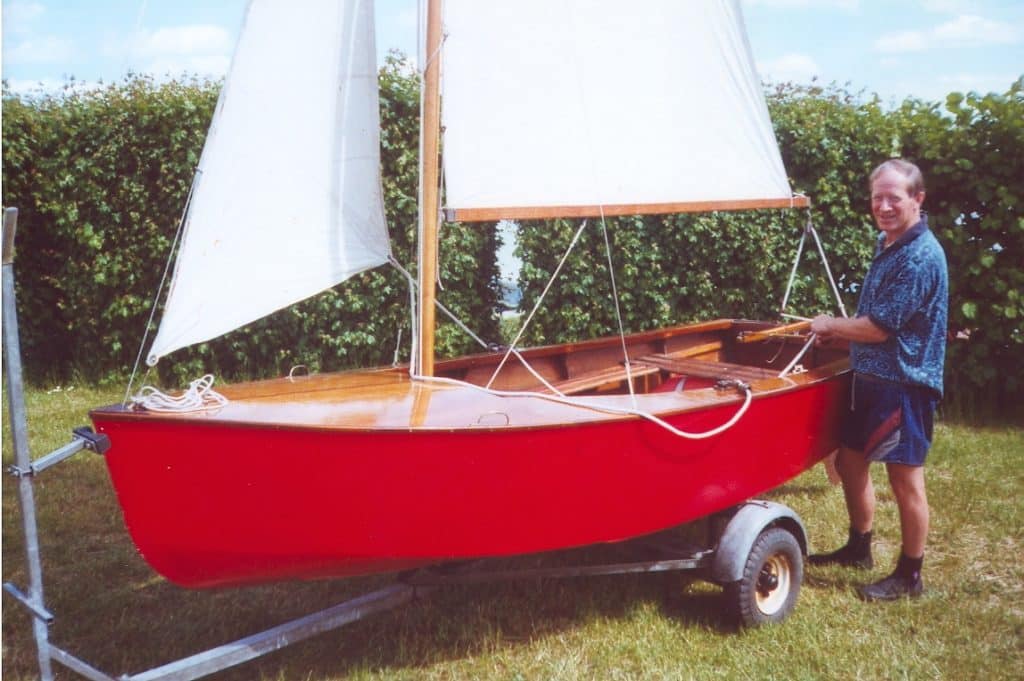
In the years following World War II there was a growing public demand for outdoor leisure pursuits, including boating. By utilising wood and adhesive technology developed during the War boat developers were able to provide a new range of affordable dinghies.
The Heron dinghy was designed by Jack Holt in 1951 for the magazine Yachting World. The success of the Yachting World G.P.14 proved that there was demand for a hard chine plywood skinned boat, designed for amateur construction. Many people who wanted to sail lived away from the coast and the G.P. 14 required a trailer for towing, which limited its appeal. The Heron is capable of comfortably holding two adults and two children and can be carried on top of the average family car. Its gunter rig means that all the spars can be stowed inside the boat, allowing for east transport.
The Heron was designed to fill the gap between the Cadet and the G.P.14 and could be rowed, sailed or driven by a small outboard motor. The class is still popular today, with ownership worldwide in excess of 10,000. It is a one-design and early sail numbers compete successfully against modern glass reinforced plastic (GRP) boats.
In addition to the Heron other Jack Holt designed boats include the Mirror dinghy, International Enterprise, British Moth, Solo, Hornet, Flying Ten, Lazy E, Prelude, Streaker and many more.
Dimensions
Length: 3.43 m
Beam: 1.37 m
Draft: 0.91m


